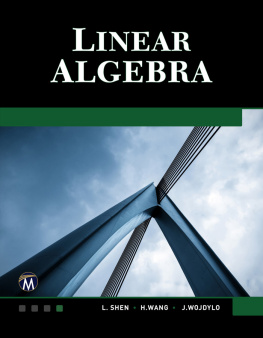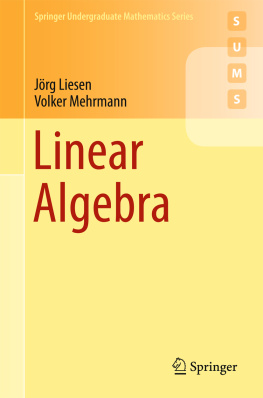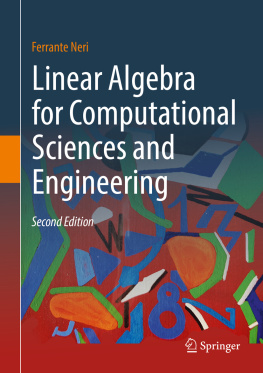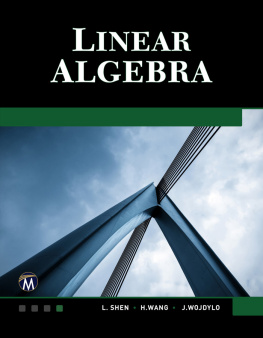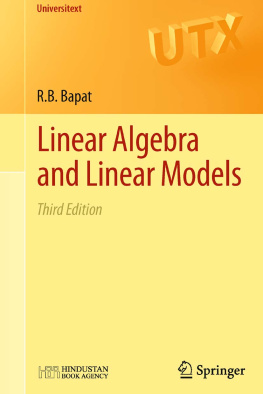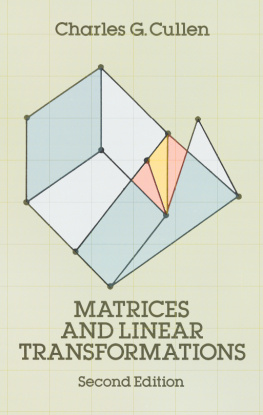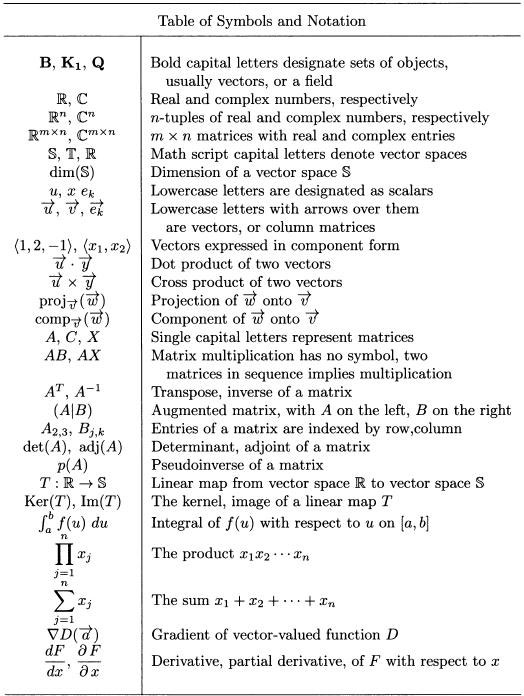Kenneth M. Shiskowski - Principles of Linear Algebra with Mathematica
Here you can read online Kenneth M. Shiskowski - Principles of Linear Algebra with Mathematica full text of the book (entire story) in english for free. Download pdf and epub, get meaning, cover and reviews about this ebook. year: 2011, publisher: Wiley, genre: Science. Description of the work, (preface) as well as reviews are available. Best literature library LitArk.com created for fans of good reading and offers a wide selection of genres:
Romance novel
Science fiction
Adventure
Detective
Science
History
Home and family
Prose
Art
Politics
Computer
Non-fiction
Religion
Business
Children
Humor
Choose a favorite category and find really read worthwhile books. Enjoy immersion in the world of imagination, feel the emotions of the characters or learn something new for yourself, make an fascinating discovery.
- Book:Principles of Linear Algebra with Mathematica
- Author:
- Publisher:Wiley
- Genre:
- Year:2011
- Rating:3 / 5
- Favourites:Add to favourites
- Your mark:
Principles of Linear Algebra with Mathematica: summary, description and annotation
We offer to read an annotation, description, summary or preface (depends on what the author of the book "Principles of Linear Algebra with Mathematica" wrote himself). If you haven't found the necessary information about the book — write in the comments, we will try to find it.
A hands-on introduction to the theoretical and computational aspects of linear algebra using Mathematica
Many topics in linear algebra are simple, yet computationally intensive, and computer algebra systems such as Mathematica are essential not only for learning to apply the concepts to computationally challenging problems, but also for visualizing many of the geometric aspects within this field of study. Principles of Linear Algebra with Mathematica uniquely bridges the gap between beginning linear algebra and computational linear algebra that is often encountered in applied settings, and the commands required to solve complex and computationally challenging problems using Mathematica are provided.
The book begins with an introduction to the commands and programming guidelines for working with Mathematica. Next, the authors explore linear systems of equations and matrices, applications of linear systems and matrices, determinants, inverses, and Cramers rule. Basic linear algebra topics, such as vectors, dot product, cross product, and vector projection are explored, as well as a unique variety of more advanced topics including rotations in space, rolling a circle along a curve, and the TNB Frame. Subsequent chapters feature coverage of linear transformations from Rn to Rm, the geometry of linear and affine transformations, with an exploration of their effect on arclength, area, and volume, least squares fits, and pseudoinverses.
Mathematica is used to enhance concepts and is seamlessly integrated throughout the book through symbolic manipulations, numerical computations, graphics in two and three dimensions, animations, and programming. Each section concludes with standard problems in addition to problems that were specifically designed to be solved with Mathematica, allowing readers to test their comprehension of the presented material. All related Mathematica code is available on a corresponding website, along with solutions to problems and additional topical resources.
Extensively class-tested to ensure an accessible presentation, Principles of Linear Algebra with Mathematica is an excellent book for courses on linear algebra at the undergraduate level. The book is also an ideal reference for students and professionals who would like to gain a further understanding of the use of Mathematica to solve linear algebra problems.
Kenneth M. Shiskowski: author's other books
Who wrote Principles of Linear Algebra with Mathematica? Find out the surname, the name of the author of the book and a list of all author's works by series.




